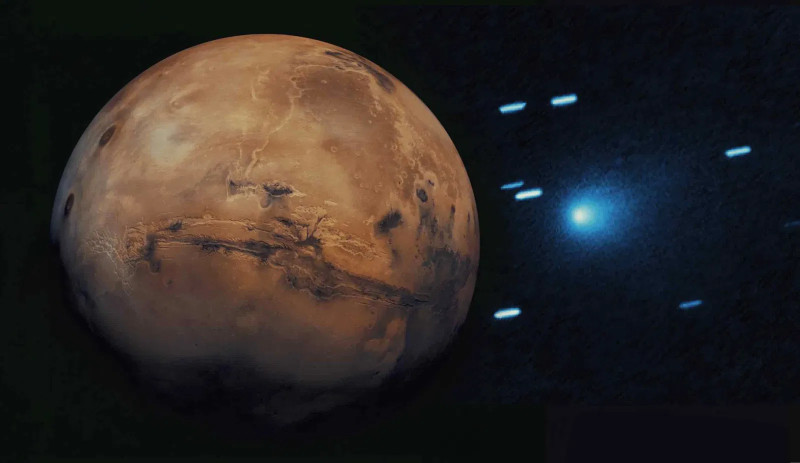NASA has released breathtaking images of the interstellar comet 3I/ATLAS, providing scientists with invaluable data about this rare celestial visitor. The comet, detected on July 1, 2025, is only the third observed interstellar object (ISO) to originate from outside our solar system, following 1I/ʻOumuamua in 2017 and 2I/Borisov in 2019.
The images, captured by NASA's Mars Reconnaissance Orbiter (MRO) and the Perseverance Mars rover, offer a unique glimpse into the composition and trajectory of this enigmatic comet. The MRO's High Resolution Imaging Science Experiment (HiRISE) camera snapped the images on October 2, 2025, showcasing the comet's path and providing a scale reference. Meanwhile, the Perseverance rover's Mastcam-Z instrument captured 3I/ATLAS as a faint smudge against a starfield on October 4, 2025.
These images are part of a broader effort by NASA to study interstellar objects, which offer insights into the formation and composition of other star systems. The comet's close approach to Mars on October 3, 2025, brought it within 29 million kilometers of the planet, allowing for detailed observations. NASA's live stream event on November 19, 2025, featured experts including NASA Associate Administrator Amit Kshatriya and Nicky Fox, who discussed the significance of these findings.
The European Space Agency (ESA) also contributed to the study of 3I/ATLAS, with its ExoMars and Mars Express missions providing additional data. The collaborative efforts of these space agencies have enriched our understanding of interstellar comets, which are rare and fleeting visitors to our solar system.
NASA's detailed images and data from 3I/ATLAS will continue to be analyzed, offering new clues about the size, chemistry, and origin of this interstellar object. As the third confirmed interstellar visitor, 3I/ATLAS provides a unique opportunity to study the mysteries of the cosmos and the potential for life beyond our solar system.
With the release of these images, NASA has once again demonstrated its commitment to exploring the unknown and pushing the boundaries of human knowledge. The study of 3I/ATLAS is a testament to the ongoing quest to understand our place in the universe and the potential for life beyond Earth.



